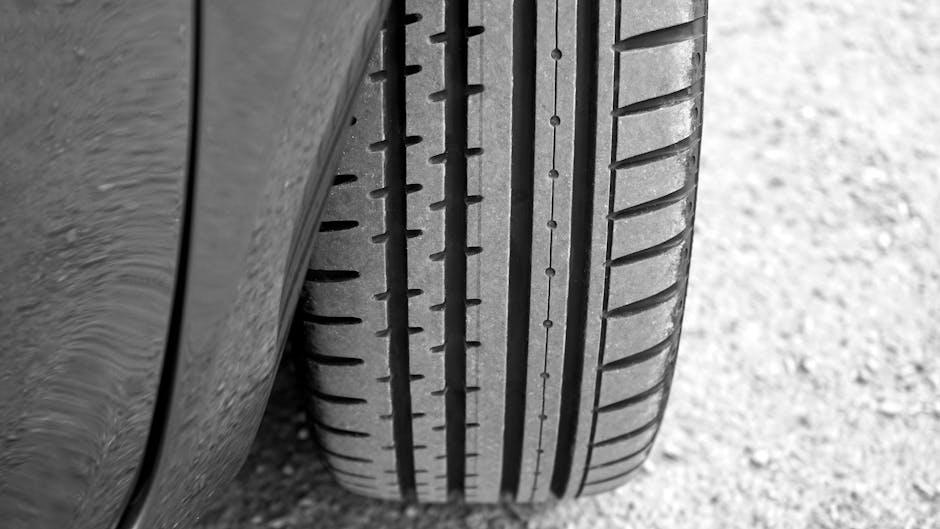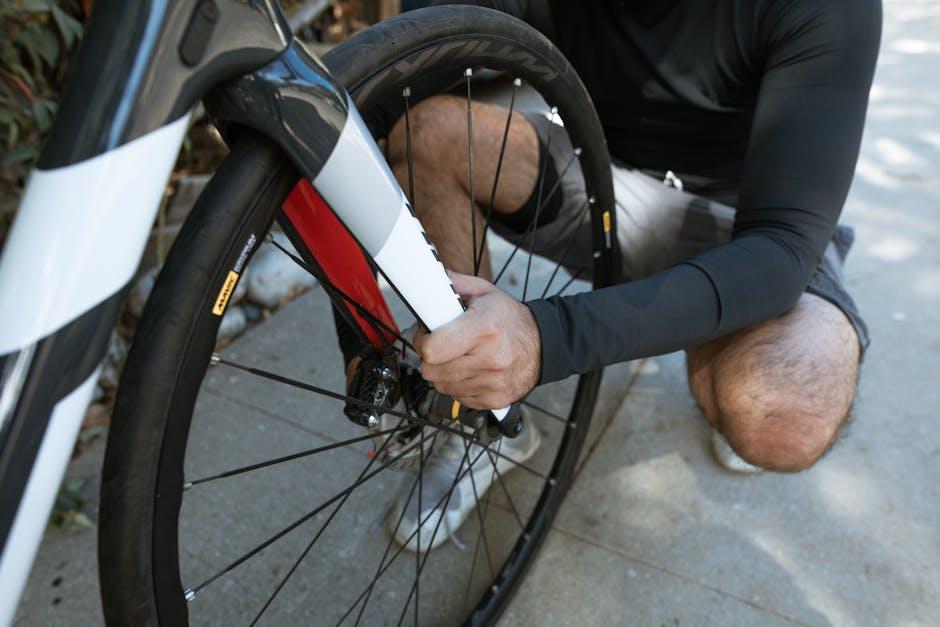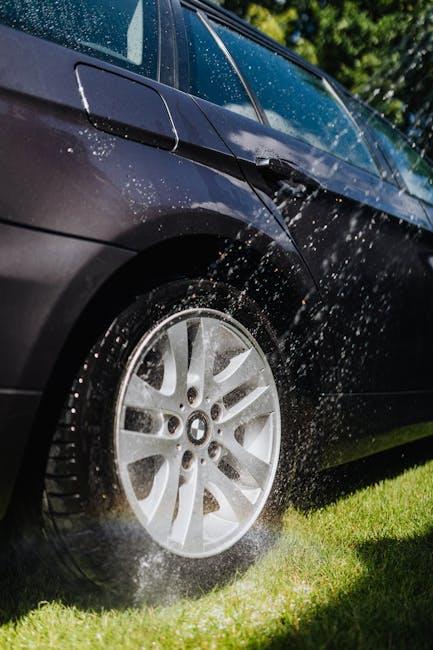A smooth, safe ride begins long before you hit the open road — it starts with the very foundation beneath your vehicle: the tires. Ensuring your tires are properly balanced and aligned is more than a routine maintenance task; it’s a vital step in preserving your car’s performance, safety, and longevity. In this article, we’ll explore the art and science behind tire balancing and alignment, demystifying the process and showing you how these precise adjustments can transform your driving experience from bumpy and uneven to steady and seamless. Whether you’re a seasoned gearhead or a casual driver, understanding how to balance and align your tires will empower you to keep your wheels rolling smoothly for miles to come.
Table of Contents
- Understanding the Importance of Tire Balance and Alignment
- Identifying Signs Your Tires Need Balancing or Alignment
- Step-by-Step Guide to Balancing Your Tires at Home
- Professional Techniques for Precise Tire Alignment
- Choosing the Right Tools and Equipment for Tire Maintenance
- Maintaining Proper Tire Care for Enhanced Vehicle Performance
- Q&A
- Closing Remarks

Understanding the Importance of Tire Balance and Alignment
Properly balanced tires and precise wheel alignment are fundamental for a smooth and safe driving experience. When tires are out of balance, you might notice vibrations in the steering wheel, uneven tire wear, or even reduced fuel efficiency. On the other hand, misaligned wheels can cause your vehicle to pull to one side, accelerate tire deterioration, and strain suspension components. Ensuring both elements are addressed not only prolongs tire life but also enhances overall vehicle stability and comfort.
Consider the benefits unlocked by maintaining tire balance and alignment, such as:
- Increased fuel efficiency by minimizing resistance
- Improved handling and responsive steering
- Reduced tire wear extending tire replacement intervals
- Enhanced safety through better traction and control
| Symptom | Cause | Effect |
|---|---|---|
| Steering Vibration | Unbalanced Tires | Driver Fatigue |
| Vehicle Pulling | Misaligned Wheels | Uneven Tire Wear |
| Uneven Tread Wear | Both Causes | Reduced Traction |

Identifying Signs Your Tires Need Balancing or Alignment
When your vehicle feels unusually bumpy or shakes at certain speeds, it’s often the first indication that your tires might be crying out for attention. An unbalanced tire can cause vibrations that travel through the steering wheel, seats, or floorboards. Meanwhile, if you notice your car pulling gently to one side or uneven tire wear patterns developing, it’s a sign that alignment is off. Ignoring these subtle hints can lead to premature tire wear, reduced fuel efficiency, and even compromised safety on the road.
Keep an eye out for these key symptoms:
- Steering wheel vibration at speeds above 50 mph
- Uneven tread wear between tires
- Vehicle drifting left or right while driving on a flat road
- Squealing tires during turns or when braking
| Symptom | Possible Cause | Recommended Action |
|---|---|---|
| Steering wheel shake | Unbalanced tires | Get tires balanced |
| Car pulls to one side | Misalignment | Perform alignment check |
| Uneven tire wear | Both alignment and balance issues | Inspect and adjust tires |

Step-by-Step Guide to Balancing Your Tires at Home
To achieve perfectly balanced tires from the comfort of your garage, start by cleaning your wheels thoroughly. Dirt and debris can interfere with the balancing process. Next, mount the wheel on a tire balancer—manual or electronic—and spin it gently. Observe the heavy spot where the wheel naturally comes to rest. This is the area that needs a counterweight. Applying small adhesive wheel weights opposite the heavy spot will help counterbalance the tire’s uneven mass. Make sure to use gloves and keep the surface clean so the weights adhere properly.
Balancing your tires doesn’t require complicated tools, but precision is key. As you add weights, repeat the spinning process to check if the imbalance lessens. Often, a few minor adjustments suffice to distribute the weight evenly. Here’s a quick checklist to guide you:
- Clean wheels and tires before starting
- Use a proper tire balancer to detect heavy spots
- Apply adhesive weights accurately opposite to heavy areas
- Re-spin and adjust until smooth balance is achieved
| Step | Tip |
|---|---|
| 1 | Use soap and water to clean rims |
| 2 | Spin wheel slowly for accuracy |
| 3 | Stick weights firmly on rim |
| 4 | Test drive to confirm smooth ride |

Professional Techniques for Precise Tire Alignment
Achieving perfectly aligned tires involves more than just eyeballing the wheels; it requires meticulous attention to detail and precise measurement tools. Start by using a quality alignment machine that measures the camber, caster, and toe angles. Adjustments are made through the suspension components, ensuring all wheels point in the optimal direction for even tire wear and improved handling. Professional technicians often rely on laser-guided systems or computer-aided sensors, which provide accuracy far beyond manual methods, minimizing guesswork and increasing the longevity of your tires.
Key steps in this process include:
- Inspecting suspension parts to identify any worn or damaged components that could affect alignment.
- Calibrating alignment equipment regularly to maintain measurement precision.
- Adjusting toe settings carefully to balance tire wear and steering responsiveness.
| Alignment Parameter | Ideal Range | Effect if Misaligned |
|---|---|---|
| Camber | -1° to +1° | Uneven tire wear, stability issues |
| Caster | 3° to 5° | Poor steering response |
| Toe | 0 to 1/8 inch toe-in/out | Increased tire wear, pulling |

Choosing the Right Tools and Equipment for Tire Maintenance
The foundation of effective tire maintenance lies in selecting the right tools that guarantee precision and safety. Investing in a high-quality tire balancing machine is essential, as it ensures the proper distribution of weight around your tire, minimizing vibrations and uneven wear. Complement this with a reliable wheel alignment system, ideally one that offers digital accuracy for sharper, more consistent results. Additionally, don’t underestimate the value of basic yet crucial tools like a torque wrench, which ensures lug nuts are tightened to manufacturer specifications, preventing dangerous loosening or over-tightening.
Choosing equipment that fits your vehicle type and personal skill level can make all the difference. Here’s a quick checklist of tools that every DIY tire enthusiast should consider:
- Tire pressure gauge: Accurate inflation for tire longevity
- Jack and jack stands: Safe lifting and support
- Torque wrench: Proper bolt fastening
- Digital wheel alignment kit: Precise angle measurement
- Balancing weights and adhesive: Fine tuning balance
| Tool | Purpose | Recommended Feature |
|---|---|---|
| Tire Balancer | Ensures wheel balance | Digital readout |
| Wheel Aligner | Corrects alignment angles | Laser-guided precision |
| Torque Wrench | Tightens lug nuts correctly | Adjustable torque settings |

Maintaining Proper Tire Care for Enhanced Vehicle Performance
Ensuring your tires are properly balanced and aligned is pivotal to achieving a smooth ride and extending the lifespan of your vehicle’s tires. Balancing distributes the weight evenly around the entire circumference of the tire and wheel assembly, eliminating vibrations and preventing uneven tire wear. This proactive step not only enhances comfort while driving but also protects the suspension and steering components from unnecessary stress and potential damage.
On the other hand, alignment adjusts the angles of the tires to the manufacturer’s specifications, ensuring that they meet the road in the most efficient manner possible. Misalignment can cause your tires to wear unevenly and rapidly, leading to handling issues and reduced fuel efficiency. Regular inspections and corrections typically involve:
- Checking camber, caster, and toe angles
- Adjusting based on wear patterns and driving habits
- Balancing tires simultaneously for optimal results
| Service Interval | Recommended Action |
|---|---|
| Every 6,000 miles | Tire Rotation & Balance Check |
| Annually or after hitting potholes | Full Wheel Alignment |
| Upon uneven tire wear noticed | Immediate Inspection & Realignment |
Q&A
Q: Why is balancing and aligning tires important for my vehicle?
A: Balancing and aligning tires ensure smooth driving, extend tire life, improve fuel efficiency, and enhance safety. Proper balance prevents vibrations, while proper alignment keeps your vehicle tracking straight and reduces uneven tire wear.
Q: How can I tell if my tires need balancing?
A: If you notice vibrations in the steering wheel or floorboard at certain speeds, uneven tire wear, or unusual noises, your tires might be out of balance. These are clear signals that balancing is needed to restore smoothness.
Q: What are the signs of misaligned tires?
A: Pulling to one side while driving, uneven or rapid tire wear, crooked steering wheel when driving straight, and decreased fuel efficiency are common indicators of misalignment.
Q: How often should I have my tires balanced and aligned?
A: It’s a good idea to check tire balance every 6,000 to 8,000 miles or when you install new tires. Alignment should be inspected at least once a year or if you hit a pothole, curb, or notice handling issues.
Q: Can I balance and align tires myself?
A: Balancing tires requires specialized equipment to measure weight distribution, while alignment needs precise adjustments of suspension angles. For accurate results and safety, it’s best to visit a professional service center.
Q: What happens if I ignore tire balancing and alignment?
A: Neglecting these maintenance tasks can lead to uncomfortable rides, premature tire wear, decreased fuel efficiency, and potentially unsafe driving conditions due to poor handling.
Q: Does balancing and alignment affect fuel economy?
A: Absolutely. Properly aligned and balanced tires reduce rolling resistance, meaning your engine doesn’t have to work as hard, which helps improve fuel mileage.
Q: Is balancing the same as rotating tires?
A: Not quite. Tire balancing distributes weight evenly on the wheel, while rotating involves moving tires to different positions to ensure uniform wear. Both are important but serve different purposes.
Q: How long does a typical tire balancing and alignment service take?
A: Balancing usually takes about 30 minutes per tire, while alignment can take around an hour for the whole vehicle. Times may vary depending on the shop and vehicle type.
Q: Can balancing and alignment fix uneven tire wear?
A: They can prevent further uneven wear and improve driving comfort, but existing tire damage may not be reversible. If wear is severe, tire replacement might be necessary.
Closing Remarks
Mastering the art of tire balancing and alignment is more than just a maintenance task—it’s a commitment to safety, efficiency, and the smooth rhythm of your drives. By keeping these essential aspects in check, you not only extend the life of your tires but also enhance the overall performance of your vehicle. Whether you’re a seasoned gearhead or a casual driver, understanding and applying these principles ensures that every journey feels balanced and controlled. So next time you hit the road, remember: well-aligned and balanced tires are the quiet heroes behind every steady mile.


2 Comments
fa2mfc
fa2mfc